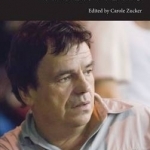Neil Jordan: Interviews
BookThis item doesn’t have any media yet
2013 | Biography
These interviews cover the career to date of Neil Jordan (b. 1950), easily the most renowned filmmaker working in contemporary Irish cinema. Jordan began as a fiction writer, winning the distinguished Guardian Fiction Prize for his very first book of short stories, Night in Tunisia, in 1976. His film debut was made during the peak of the Troubles in Ireland, and he addresses the sectarian violence head-on in his first outing, Angel (1982). This film also marked Jordan's long-time association with the actor Stephen Rea who has appeared in nine of the director's films and is often seen as Jordan's doppelganger. Angel was awarded the London Evening Standard Most Promising Newcomer Award, the first of many accolades. These include the London Critics Circle Award for Best Film and Best Director for The Company of Wolves (1984), Best Film at the BAFTAs, as well as an Academy Award for Best Screenwriter for The Crying Game (1992), Best Film at the Venice Film Festival for Michael Collins (1996), Best Director at the Berlin Film Festival for The Butcher Boy (1997), and a BAFTA for Best Screenplay for The End of the Affair (1999).
The director continued to publish works of fiction as well as writing the scripts for most of his feature films, and in 2011 he produced a highly regarded novel, Mistaken, set in Jordan's home turf of Dublin and featuring characters who are duplicates of one another as well as mysterious arrivals and departures at the home of the Irish author of Dracula, Bram Stoker. The filmmaker has most recently produced, written, and directed the television series The Borgias (starring Jeremy Irons) and completed his fourteenth feature film, Byzantium, the story of a mother and daughter vampire duo, recalling his earlier work on the Anne Rice novel Interview with the Vampire (1994).
Related Items:
| Published by | University Press of Mississippi |
| Edition | Unknown |
| ISBN | 9781617037450 |
| Language | N/A |
Images And Data Courtesy Of: University Press of Mississippi.
This content (including text, images, videos and other media) is published and used in accordance
with Fair Use.
